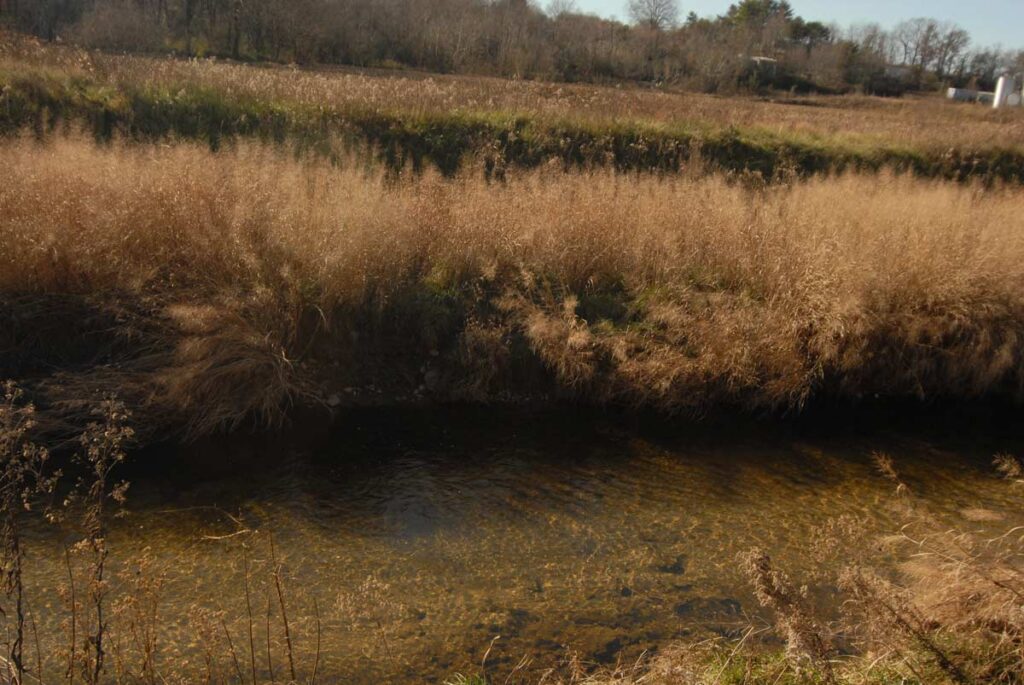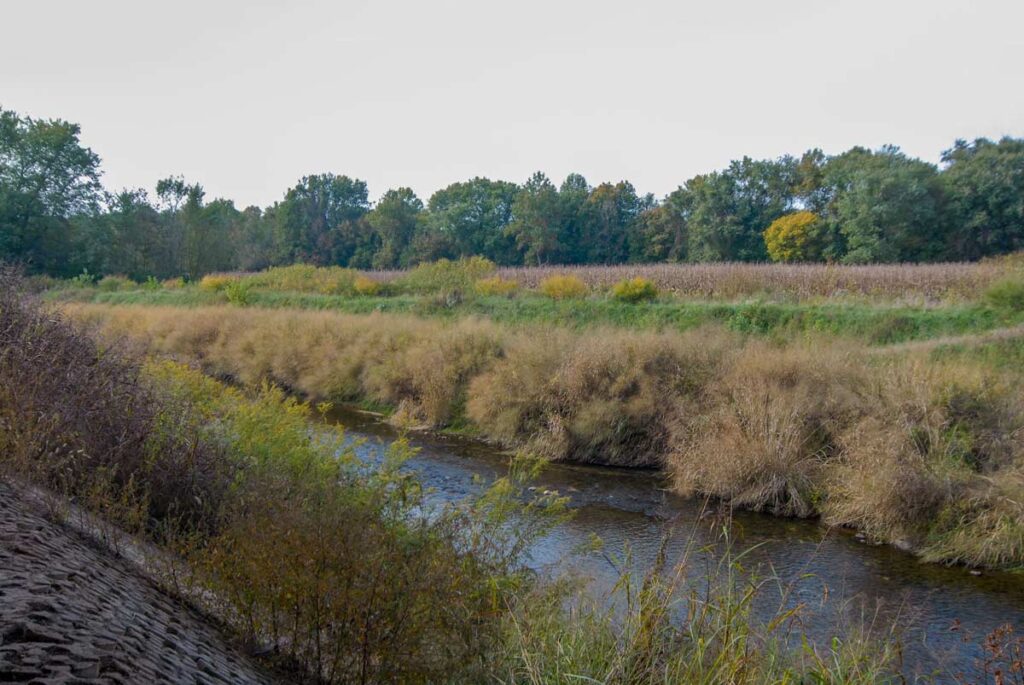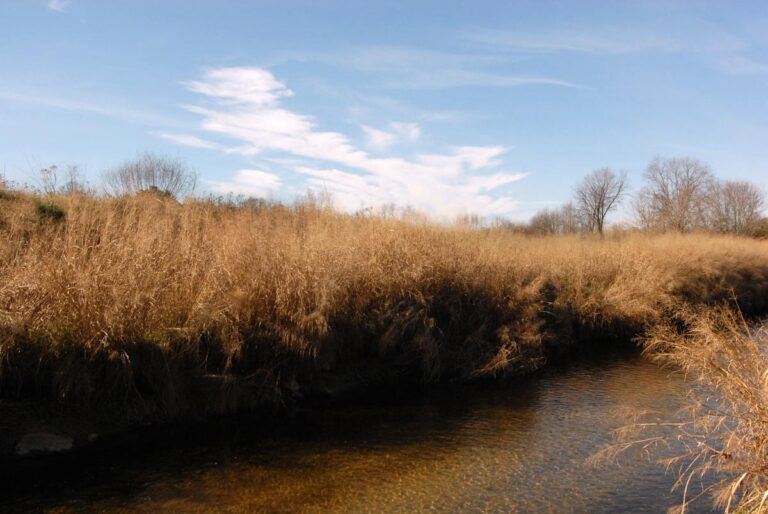Riparian buffers are vegetated zones alongside rivers, streams, and other waterways. These natural formations play a critical role in safeguarding water quality, reducing erosion, and supporting biodiversity. When planted with native warm season grasses, these buffers become even more effective, thanks to the grasses’ deep root systems, nutrient uptake capabilities, and resilience in working landscapes.
In this blog, we’ll explore:
- Why riparian buffers matter in agricultural and conservation contexts
- The specific benefits of native warm season grasses in riparian buffers
- Best practices for buffer design using multi-zone approaches
- The role of buffers in supporting pollinators and wildlife
- Strategies for managing livestock near water bodies
- How to turn buffer vegetation into an economic asset
- Funding and incentive programs that make implementation feasible
Let’s begin by looking at the broader environmental value of riparian buffers.
The Value of Native Warm Season Grasses in Riparian Buffers
Native warm season grasses are essential tools in building effective, ecologically sound riparian buffers. These species are adapted to the natural rhythms of summer growth and regional precipitation and play a critical role in stabilizing soil, filtering runoff, and improving long-term land resilience.
Their deep, fibrous root systems anchor the soil while dramatically improving infiltration and nutrient uptake. Compared to shallow-rooted cool-season grasses, native warm season grasses in riparian buffers are significantly more effective at removing excess nitrogen, phosphorus, and sediment before they reach waterways.
Proven Species for Riparian Performance
Several native warm season grasses are especially well-suited for riparian plantings in the Northeastern United States. All of the following are currently available through Ernst Conservation Seeds:
- Switchgrass (Panicum virgatum) – Fast-establishing and highly adaptable; excels in a variety of soil moisture conditions.
- Big Bluestem (Andropogon gerardii) – Tall, robust, and ideal for erosion-prone areas.
- Indiangrass (Sorghastrum nutans) – Distinct seedheads and excellent drought tolerance.
- Eastern Gamagrass (Tripsacum dactyloides) – Deep-rooted and productive in moist lowland soils.
- Little Bluestem (Schizachyrium scoparium) – Compact, resilient, and valuable for habitat diversity.
- For best results, consider using a specialized seed mix prepared by the experts at Ernst.
These native warm season grasses not only reduce pollutant runoff but also build organic matter in the soil and create structural barriers to sediment flow. Over time, they require fewer inputs, making them a cost-effective solution for landowners focused on both environmental and economic sustainability.
Buffer Zoning: A Multi-Tiered Approach
Effective riparian buffers are rarely one-size-fits-all. The most resilient and high-functioning buffers are designed using a zoned approach, with each zone tailored to the unique ecological functions it must serve. This multi-tiered model is widely recommended by conservation agencies and research institutions as the best way to maximize both environmental and agronomic benefits.
Recommended Riparian Buffer Zones
Riparian zones are typically divided into three functional layers, each supporting different vegetation types:
Zone 1: Streamside Canopy
This is the first 15 feet from the water’s edge. Trees and woody shrubs dominate here. This zone is critical for aquatic life because the plants that thrive in it anchor streambanks and provide shade to reduce water temperature. Overhanging vegetation also contributes organic material and insect input to the stream.
Zone 2: Herbaceous Filter Strip
Extending beyond the canopy zone, this middle tier is where native warm season grasses in riparian buffers have their greatest impact. Their dense root systems and upright growth slow runoff, filter nutrients, and trap sediment.
Zone 3: Upland Transition Zone
The outermost buffer layer often overlaps with agricultural land. Perennial grasses and forbs stabilize soils and create habitat corridors for pollinators, birds, and small mammals.
From water filtration to erosion control to wildlife support, strategic zoning ensures each square foot of buffer is performing a defined role.
Enhancing Biodiversity and Pollinator Habitat with Riparian Buffers
The benefits of riparian buffers go beyond simply filtering water. When designed with ecological diversity in mind, these vegetated corridors can support robust populations of pollinators, birds, amphibians, and small mammals. Native warm season grasses in riparian buffers are foundational to this effort.
Dense Structure Provides Essential Cover
Warm season grasses like big bluestem and little bluestem grow in upright, clump-forming patterns. This creates an ideal habitat for ground-nesting birds, small mammals, and overwintering insects. The dense stems also protect emerging wildlife from predators and extreme weather.
Synergy with Flowering Forbs Supports Pollinators
When planted alongside native wildflowers, these grasses offer nectar, pollen, and larval host plants for native bees, butterflies, and moths. The grasses bloom later than many wildflowers, extending the visual interest and habitat function of the buffer into late summer and fall.
Year-Round Habitat Value
Unlike mowed turf or row crops, these grasses remain standing through winter, providing structure, food, and refuge when other habitat sources are scarce.
Biodiverse riparian buffers aren’t just a conservation ideal. They’re a practical, science-backed way to restore ecological balance in working landscapes.

Managing Livestock Near Riparian Buffers
On many farms, the land adjacent to streams doubles as pasture. But unmanaged livestock access to waterways can quickly undermine both agricultural productivity and water quality. Trampling, nutrient loading, and sediment runoff are common consequences. Riparian buffers, particularly those anchored by native warm season grasses, can help restore balance between productive use and environmental protection.
Here’s how landowners can mitigate livestock impact while preserving waterway integrity:
Streambank Degradation
Hooves destabilize streambanks, accelerating erosion and widening channels. Vegetated buffers with deep-rooted species like switchgrass help hold banks in place and reduce repair costs over time.
Nutrient Pollution
Cattle contribute high levels of nitrogen and phosphorus when allowed to wade or defecate in streams. Dense buffer vegetation filters runoff before it reaches the water, significantly reducing nutrient loads.
Pathogen Risk
Animal waste introduces harmful bacteria and pathogens into water supplies. Vegetative buffers act as a biofilter, intercepting contaminants before they reach downstream users.
Fencing and Access Control
Combining riparian vegetation with livestock exclusion fencing is the most effective strategy. This practice is so effective that many states offer cost-sharing for buffer establishment and fencing installation. (More on this below.)
When properly designed, riparian buffers serve as both environmental safeguards and functional boundaries within a working farm. In fact, with growing demand for renewable fiber and sustainable products, native warm season grasses in riparian buffers may offer new revenue streams for producers.
Turning Buffers into Economic Assets
While riparian buffers are often viewed as a tradeoff between productivity and conservation, a well-managed buffer can also function as a source of income. Native warm season grasses such as switchgrass and Indiangrass produce substantial biomass that is increasingly marketable for commercial use. For many landowners, this opens the door to creating a “working buffer” that protects waterways and pays dividends over time.
Emerging Uses for Native Grass Biomass
Native warm season grasses are finding a foothold in several growing industries. With proper harvesting schedules, landowners can periodically cut and bale vegetation from buffer zones without compromising ecological performance.
Common commercial applications include:
- Animal bedding – Their high absorbency and durability make them an alternative to wheat straw in equine and livestock facilities.
- Mulch and compost feedstock – A renewable, locally sourced option for landscaping and agriculture.
By aligning conservation practices with market demand, riparian buffers become not just a regulatory checkbox but a strategic component of the farm business model.

Public and Private Incentives for Buffer Establishment
Establishing riparian buffers can involve upfront costs, especially when transitioning productive land to conservation use. Fortunately, a range of public and private incentive programs are available to offset those costs and encourage adoption. These tools can make the choice to plant native warm season grasses in riparian buffers more financially viable for landowners.
USDA Conservation Programs
Federal initiatives such as the Conservation Reserve Program (CRP) and Conservation Stewardship Program (CSP) offer annual rental payments and cost-share support for land enrolled in conservation practices, including riparian buffers.
State-Level Funding in the Northeast
In Pennsylvania and neighboring states, agencies like the Department of Environmental Protection and conservation districts provide grants for fencing, site prep, and seed purchases, particularly within the Chesapeake Bay watershed.
Targeting Marginal Lands
Many incentive programs focus on converting low-yield or flood-prone land, where agricultural productivity is already limited. This allows landowners to protect waterways without sacrificing their best acreage.
Technical Assistance Included
Most programs include planning and installation guidance, ensuring that buffers are properly designed for both ecological function and long-term success.
The Case for Native Warm Season Grasses in Riparian Buffers
When properly planned and maintained, riparian buffers provide measurable environmental and economic returns, especially when native warm season grasses are used as the foundation. From nutrient filtering to pollinator support to emerging biomass markets, their multifunctionality makes them a smart investment for farms and restoration projects alike.
If you’re planning a riparian buffer and want tailored guidance on seed selection, zoning strategies, or site preparation, the experts at Ernst Conservation Seeds are here to help.
Contact us today for assistance with your project or to get answers to any questions this blog didn’t address.

